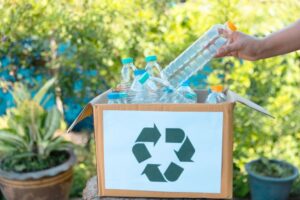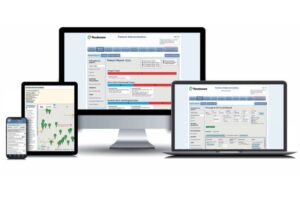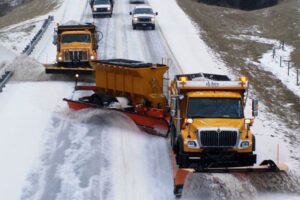Effective customer communication in solid waste and recycling is all about making real connections with the people you serve — no matter their age, the language they speak, or the place they call home — and helping them engage with your programs and services the right way.
Whether your goals include reducing recycling contamination or reducing phone calls and missed collections, it’s imperative to reach not only the people whose attention you already have, but also those who might be harder to reach.
Yet reaching and engaging with all demographics in your service area is not only critical for the success of your programs: It’s the right thing to do.
Here are four ways to get started.
1. Assess and adapt your communications.
Consider the demographics of the people you serve, and continuously adapt your communication approaches to reach them.
Consider those who speak English as a second language (or not at all), people who do not have access to or don’t always use technology, and temporary residents such as tenants and travelers.
Non-English-speaking and English-as-a-second-language households: Almost a quarter of US households speak a language other than English at home, according to the Center for Immigration Studies. In the UK, Gov.UK reports that about eight percent of people use a language other than English as their main language. In Canada, about 10 percent of households usually speak a language other than English at home, according to Statistics Canada.
Meet the needs of the people in your community, no matter their background, by rethinking language and creating and revamping programs to be relevant, inclusive and culturally competent.
An aging population: Communities are becoming more diverse and they’re aging, too. Today 16 percent of the US population is 65 or older. And while older people probably won’t see your recycling TikToks, they’ll likely catch your Facebook posts and turn to your website for information. (Only about three percent of TikTok users are over 55, while the 65-and-up crowd is Facebook’s fastest growing demographic.)
Visitors and temporary residents: Today, we are more mobile and environmentally conscious than ever before. In fact, 43 million people in the US who travel consider themselves to be “ecologically concerned.” This means that they recycle at home and want to continue their efforts when they’re traveling, too.
Regardless of language, age, and mobility, you need to reach the people who rely on your services and reliably teach them how to take part by adapting communication strategies.
2. Meet people where they are.
Once you understand the makeup of your community, prepare to meet them where they are.
Address language barriers: Learn more about common languages in your area. Does your organization offer translation services? If so, what solid waste education and promotional collateral do you translate?
Our digital tools for waste and recycling education include 15 languages: English, French, Spanish, Korean, Khmer, Simplified Chinese, Hatian Creole, Hungarian, Japanese, Portuguese, Punjabi, German, Czech, Russian and Vietnamese. Users simply select their preferred language, and the tools remember that selection. Our apps automatically detects the preferred language, so it’s completely seamless.
Mix up your communication channels: This might look like providing reminders by phone as well as email and text, and allowing digital collection calendars to be printed so people who prefer paper can hang it up for reference. Be aware: Our data shows that senior citizens definitely adopt digital tools for recycling education, so don’t assume that they won’t!
Make sure communications are accessible: Our communication tools for municipalities and haulers are audited annually by a third-party organization to confirm our compliance with Web Content Accessibility Guidelines (WCAG AA 2.1). This process ensures that our web tools and mobile app are accessible by as many people as possible, comply with regulations, and are easy to use.
3. Formulate your outreach and engagement plan.
Once you have a handle on your community’s demographics and some strategies to create inclusive communications, tap into your resources. You might:
- Engage with multicultural media partners, including newspapers, radio, TV stations, and groups.
- Form partnerships with community leaders.
- Centralize and localize web and app content to make it easy to find.
- Ensure messaging reaches visitors and new community members by connecting with homeowners associations, RV parks, and real estate agencies.
- Leverage technology to promote and educate people about your programs.
- Cross-promote your waste and recycling information on your partners’ websites — and embed your digital tools there, too. (Yep, our customers can embed these tools anywhere they’d like!
4. Be flexible — and get creative.
In Avon, Colorado, Walking Mountains Science Center Sustainability Programs Manager Nina Waysdorf says the area features some 55,000 full-time residents, plus a “huge” transient group of seasonal tenants and tourists from all over the world. In addition, some 25% of the population there speaks Spanish.
Waysdorf and her team work hard to create inclusive programming. Recycling tours and materials are offered in Spanish, and translations are not only technically accurate, but also culturally relevant to their community, she says.
While there is no feasible way to translate waste and recycling information to every language spoken in the county, pictures are an incredibly helpful tool to reach people, no matter the language they speak.
Overall, Waysdorf says tapping into multiple forms and channels for communication helps her team engage the community to create positive outcomes.
Learn more. Struggling to engage harder-to-reach demographics in your area? Check out our webinar from ReCollect on the topic!





